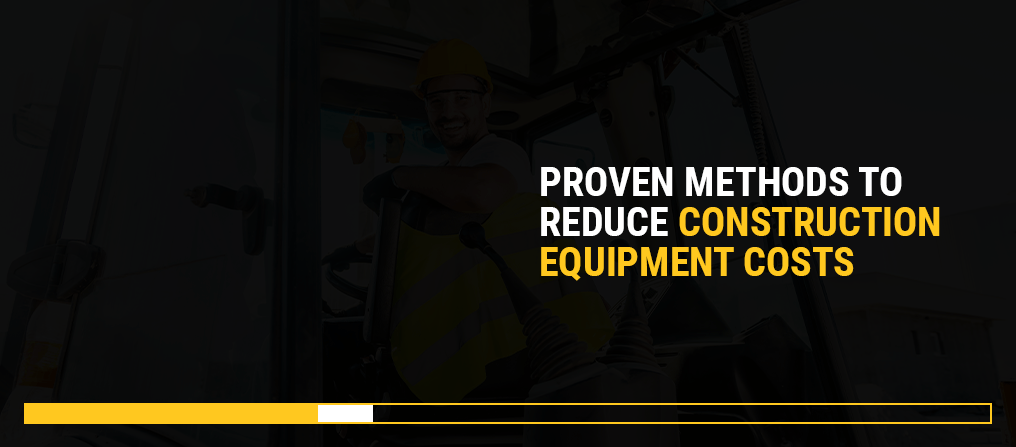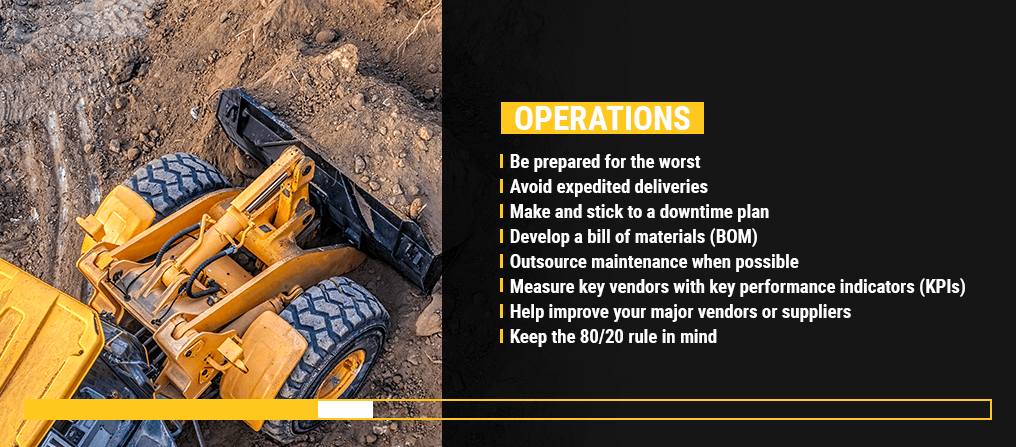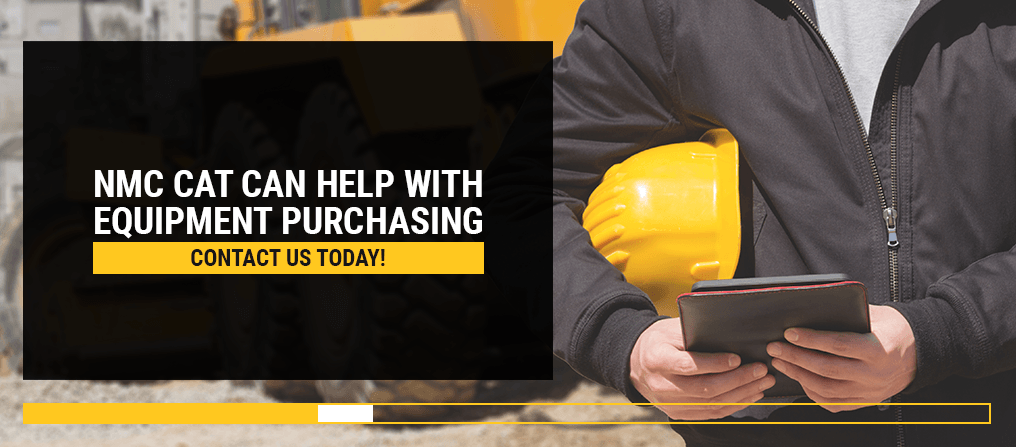
Proven Methods to Reduce Construction Equipment Costs
Category: Equipment and Solutions
As a construction company, staying within budget can sometimes be a challenge. However, once you learn a few trusted methods for cutting your construction equipment costs, finishing the month at or under budget becomes much easier. In this guide, we’ll provide simple and effective tips on how to cut construction project costs. By exploring and implementing these methods, you can save money, boost your efficiency and prolong the life of your equipment.
What Are Ways to Reduce Operating Expenses?
One of the best ways to save money in the construction business is to commit to preventive maintenance and service, which can drastically reduce the number of problems your equipment will experience later on the job site. Some other cost-saving ideas for construction companies can be implemented in the areas of equipment, employees, operations and organization:
Equipment
Perhaps the most effective way to reduce your equipment operating costs is by keeping track of idling, as idling wastes fuel, wears the engine down and eats up warranty hours. Depending on where you live, it may also be in violation of your state’s emission laws. Other tips to keep in mind include:
- Match the machine to the task: Do the math to confirm the right-sized machine is being used for each task. If you’re using a huge machine for a tiny task, see if there’s a smaller piece of equipment that can handle the task just as easily.
- Use consignment parts:Consignment parts are parts you only have to pay for if you use. Try to use these as much as you can.
- Find alternative uses for your equipment: If you have a piece of equipment that’s used infrequently and only for one purpose, consider other ways it could perform a valuable function.
- Put together an equipment optimization team: An equipment optimization team can conduct analyses and offer recommendations as to what equipment should be eliminated.
- Rent your equipment out to others:If you have equipment that is underused, consider forming alliances or partnerships with others who can rent your equipment so it can generate you more income.
Employees
One effective way to improve employee efficiency is by ensuring your technicians and mechanics have the required skill sets for their positions. Well-trained craftsmen can complete their tasks more safely and efficiently. Other useful tips include:
- Offer operators basic care training: A well-trained operator can detect most equipment-related problems. This training will also allow operators to offload work from the field and shop mechanics.
- Ensure adequate oversight: If a job is not properly supervised, it may take more time and cost more money. Audit to minimize errors and ensure quality.
- Use low-cost labor for pickup and delivery: Avoid having technicians or mechanics pick up and deliver your parts. Instead, allow them to focus on the tasks they are specifically trained for.
- Hire someone full-time to manage inventory: If you have several thousand line items, it makes sense to hire a full-time purchasing employee or attendant. They can help you control costs and much more.
- Treat outsourcing partners like your own employees: This means maintaining good relationships with outsourcing partners, managing them and routinely meeting with them to plan.
Operations
If you want to improve the efficiency of your operations, one of the first questions you should ask yourself is, “What can I automate?” The more you can automate, the more accurate things may be. Other ways you can streamline your operations include:
- Be prepared for the worst: Create contingency plans for a variety of worst-case scenarios, then share those plans with all employees. It’s important to be able to think through these situations when you aren’t flustered or frenzied — it can help you act quickly if one of these issues does occur.
- Avoid expedited deliveries: Whenever possible, plan and schedule so materials will be available without having to spend extra money for expedited deliveries.
- Make and stick to a downtime plan: When there are lulls, you should fill them with tasks that need to get done but aren’t usually a top priority. These things could include making deliveries and running errands, repairing and servicing equipment, picking up, delivering, staging or rearranging materials on the work site for upcoming projects and filling out paperwork.
- Develop a bill of materials (BOM): Develop a BOM for all your equipment, or at the very least your most important equipment.
- Outsource maintenance when possible: Keeping core competencies in every area can be difficult. Search for maintenance services that make sense for your operations based on how specialized they are and the uniqueness of their equipment support or facilities.
- Measure key vendors with key performance indicators (KPIs): Measure your key vendors with KPIs so you can hold them responsible for costs and performance, set measures and goals, and make expectations clear.
- Help improve your major vendors or suppliers: You can aid your major suppliers by sharing tips and techniques on how to make their processes better.
- Keep the 80/20 rule in mind: The 80/20 rule says that 80% of your issues are caused by 20% of your components.
Organization
One of the first things you can do to improve your organization is clean up your parts room. Keeping trash and clutter to a minimum in your part room can make it safer and easier to look for and retrieve parts. Other organization tips include:
- Manage parts with a computerized maintenance management system (CMMS): A CMMS can help organize your parts and help you avoid the cost of unmanaged parts. Parts that aren’t managed tend to cost several times their value.
- Implement clear labels: Labeling makes items much easier to find, and when you save time, you can save money.
- Make a communications plan: Ensure everyone between you and your equipment knows what they need to do and who they should contact in a certain situation. These situations could include injuries or accidents on the site, equipment failure, damage or theft and a variety of other unexpected problems. A communications plan can save you money and downtime when all workers know exactly what they need to do and are equipped with the resources to report issues, including names, contact information and process charts.
- Use checklists:Make and implement service checklists that must be initialed by job and site managers. This helps to organize service items, make them more predictable and keep the operators accountable.
NMC Cat Can Help With Equipment Purchasing
Another way to reduce the cost of construction is to use high-quality, reliable equipment that is suitable for the work you do — and we at NMC Cat can help you out. Reach out to us by calling 800-628-6025 or filling out our online form today, and our staff will be happy to point you in the right direction.


